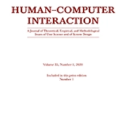Eye gaze analysis is an important research problem in the field of Computer Vision and Human-Computer Interaction. Even with notable progress in the last 10 years, automatic gaze analysis still remains challenging due to the uniqueness of eye appearance, eye-head interplay, occlusion, image quality, and illumination conditions. There are several open questions including what are the important cues to interpret gaze direction in an unconstrained environment without prior knowledge and how to encode them in real-time. We review the progress across a range of gaze analysis tasks and applications to elucidate these fundamental questions; identify effective methods in gaze analysis and provide possible future directions. We analyze recent gaze estimation and segmentation methods, especially in the unsupervised and weakly supervised domain, based on their advantages and reported evaluation metrics. Our analysis shows that the development of a robust and generic gaze analysis method still needs to address real-world challenges such as unconstrained setup and learning with less supervision. We conclude by discussing future research directions for designing a real-world gaze analysis system that can propagate to other domains including Computer Vision, Augmented Reality (AR), Virtual Reality (VR), and Human Computer Interaction (HCI). Project Page: https://github.com/i-am-shreya/EyeGazeSurvey}{https://github.com/i-am-shreya/EyeGazeSurvey
翻译:眼视分析是计算机视觉和人类-计算机相互作用领域的一个重要研究问题。即使过去十年取得了显著进展,由于眼貌的独特性、眼睛头的相互作用、封闭性、图像质量和照明性条件,自动眼视分析仍然具有挑战性。有几个尚未解决的问题,包括哪些重要线索可以在没有事先了解的情况下,在不受限制的环境中解释视视方向,以及如何实时地将视视方向编码。我们审查一系列眼视分析任务和应用的进展情况,以阐明这些基本问题;确定凝视分析的有效方法,并提供可能的未来方向。我们根据目视分析的优势和所报告的评价指标,分析最近的视力估计和分割方法,特别是在不受监督和监管的薄弱领域。我们的分析表明,制定稳健和通用的视力分析方法,仍需要应对现实世界的挑战,例如没有受到约束的设置和在较少监督的情况下进行学习。我们最后我们讨论了设计真实世界视觉分析系统的未来研究方向,该系统可以传播到其他领域,包括计算机视野、变真真真真真真真真真假(AR)、虚拟-真实性(Rambas-Gruya/Comiamimia)/人类计算机互动(MA-Gli-Gnialima/GISima/GISimia/GI)项目)。



